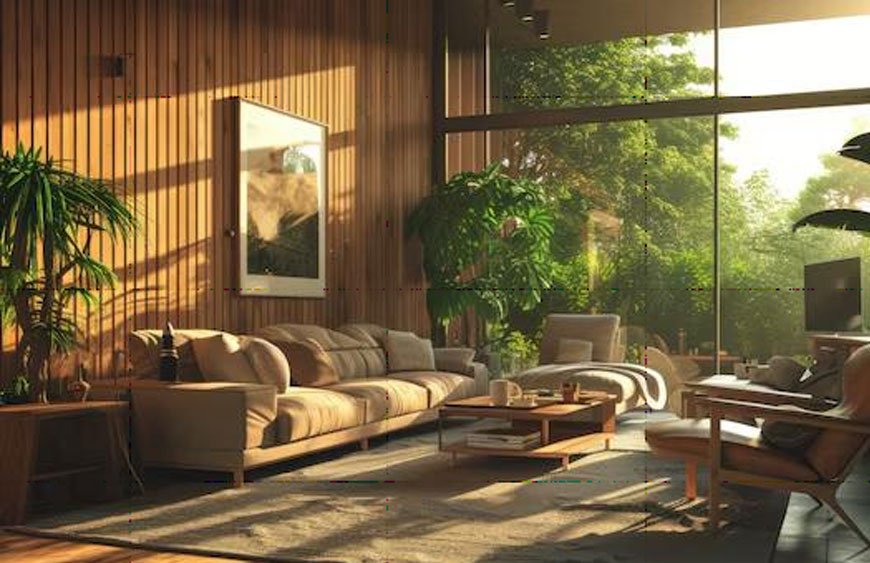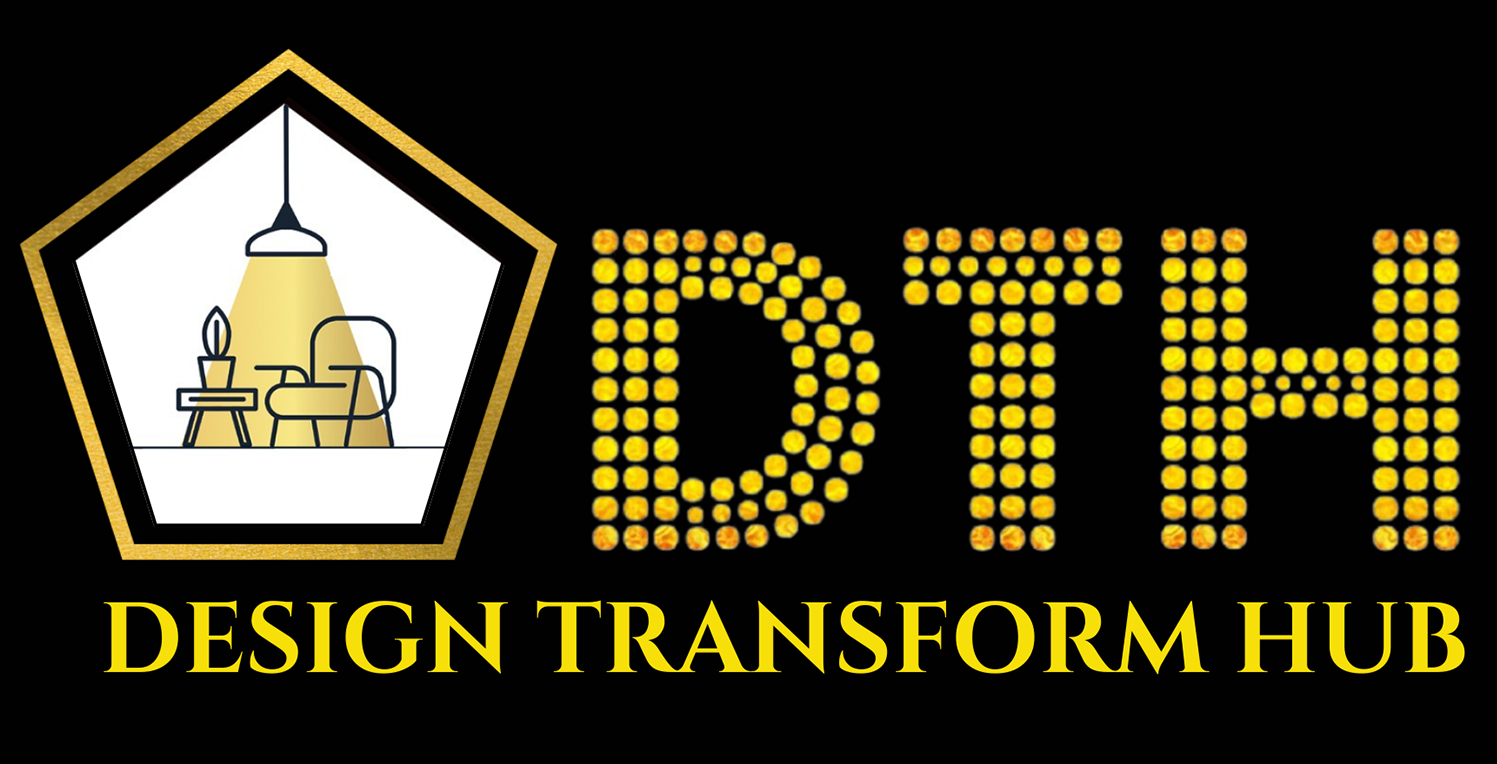An improved state of living. A vicinity where you can repose, enjoying the fruit of your labor.
To achieve such a status quo, understanding the role of sustainability in interior design is a matter of great urgency.
Green living and homemade recycled goods are two factors that any interior designer should consider as we head toward the future.
What Is Sustainability in Interior Design?
Sustainability in design is defined as assimilating objects and materials characterized by principles of verifable economics and ecological sustainability into the interior design process. It’s the practice of creating environmentally responsible and aesthetically pleasing spaces. This approach considers the entire lifecycle of items to minimize negative environmental impact.
Interior designers can achieve sustainability in interior design using renewable, recyclable, and biodegradable materials. For example, they can use bamboo instead of hardwood for flooring.
Why Is Sustainable Interior Design Important?
An approach exhibits an ethical devotion to preserving the environment.
Additionally, solving environmental issues minimally saves time, efort, and cost, limiting the earth’s aftermath. Briefy speaking, it satisfes customers while creating a healthy method of environmental interior design, ensuring efciency.
How to Implement Sustainability in Interior Design ?
The purpose of eco designs is to establish a collective awareness of the need for sustainability in interior design. Reclaiming materials typically built for singularuse in a modern technique—a cutting-edge trend to refurbish furniture and appliances to meet living demands.
Generating energy-efficient equipment aids in greenhouse emissions.

Using natural light and solar energy promotes lessened consumption, and simple things like color choice eliminate depending on artificial light.
Moreover, working with recyclable materials that impose an imminent threat on natural resources can diminish carbon footprints and radio emissions, thus, reducing the consequences of the industrial revolution.
Luckily such solutions are available by managing and extracting diferent products and materials; thus, healthy spaces are within reach and obtainable.
Choosing Sustainable Materials in Interior Design
Conscious choices make all the diference; here are some materials to consider for your next sustainable interior design:
Bamboo is a long-lasting and enduring type of wood. It is a fashionable choice that will brighten the appearance of your home.
It is durable, adaptable to heat, and withstands swelling and shrinking. Convenient for your kitchen, living room, and bathroom. You can use it to make countertops, window screens, and stylish furniture.
Restored Woods
Save forests and stop tree cutting by reclaiming wood. Lesser waste and disposables mean that outdated wood won’t have to end up in landflls.
Style your house in antiquity giving it a vintage impression. You can utilize wood in fooring or a support beam that livens up the room.

Natural Stones
Incorporating nature gives a welcoming vibe to your home. Rustic can be new to introduce to your designs.
Granite, slate, and sandstones ofer a variety of colors and shapes that make the perfect choice for wall cladding, Fireplaces, and decorative items.
Recycled Aluminum
Recycled aluminum gives a new meaning to a healthy indoor environment. By minimizing pollution, carbon emissions, mining scars, and saving electricity, it is a unique decision to design a bold lighting fixture. It can also be used to build staircases and railings.

Energy Efficiency in Interior Design
Living in an energy-efcient house reduces the cost of utility bills. By incorporating energy-efcient lighting, appliances, and HVAC systems and maximizing natural light, interior designers can signifcantly reduce energy usage for their clients
Sustainable design can improve occupant health by maximizing natural light and views, providing access to nature, and creating spaces that promote physical activity and mental wellness.

“WHY IS PROPER VENTILATION IS IMPORTANT IN INTERIOR DESIGN”
Interior designers are now carefully considering the placement of operable windows and doors on different altitudes, using low air pressure to flow directly through spaces and exit from an opening at the opposite side of the building, creating a natural phenomenon called cross-ventilation.

This strategy improves air quality impacting human health, allowing the homeowner to enjoy a comfortable living experience without depending on HVAC systems.
Additionally, allowing natural light to enter the room regulates the body’s biological clock, guaranteeing restful sleep and creating a warmer, tranquil setting.
Why Is It Important to Use Non-toxic Materials in Interior Design?
Toxic materials, such as volatile organic compounds (VOCs) and formaldehyde, can cause various health problems, including respiratory issues, headaches, and nausea.
In addition to being harmful to human health, toxic materials can also harm the environment. Floors, furniture, and wall paint contain chemicals that drastically
afect health resulting in diseases like hormone imbalance and congenital disabilities. It afects us so deeply that it may cause cancer in some cases.

From using reclaimed wood furniture to selecting energy-efficient lighting and natural materials like bamboo and cork, we help you showcase décor that aligns with your eco-conscious values.
Our design solutions prioritize sustainability by integrating renewable resources, low-impact finishes, and waste-reducing practices, ensuring that your home transformation is both stylish and environmentally responsible.
Sustainability in architecture and interior design
At Design Transform Hub, we are committed to creating spaces that are not only aesthetically innovative but also environmentally responsible. Sustainable architecture and interior design are at the heart of our design philosophy. We believe that the built environment should enhance the quality of life while minimizing its impact on the planet.
Our approach integrates eco-friendly materials, energy-efcient systems, and sustainable building practices to create spaces that are both functional and environmentally conscious.
Pros of Sustainable Interior Design
Environmental Impact
Cost Savings
Increased Property Value
Cons of Sustainable Interior Design
Limited Availability of Materials
Maintenance Considerations
Longer Design Process

Conclusion
Venture on the other side of technology and industrial living. Be one with nature as you step outside into the real world, let go of your accustomed habitual life and try new ways. You never know what will happen; you could be in for a great treat that’s friendly and eco-friendly sweet.
Join us in creating spaces that celebrate nature, promote energy effciency, and contribute to a greener future.








